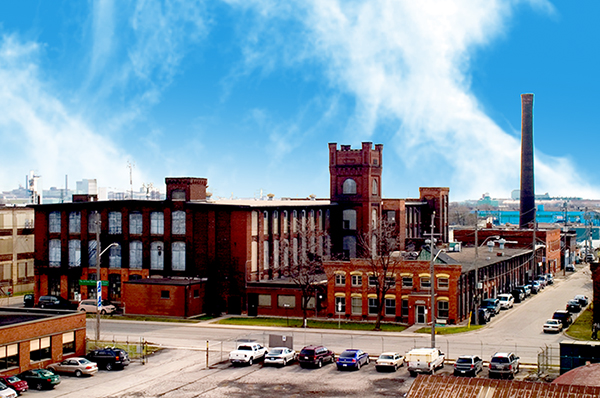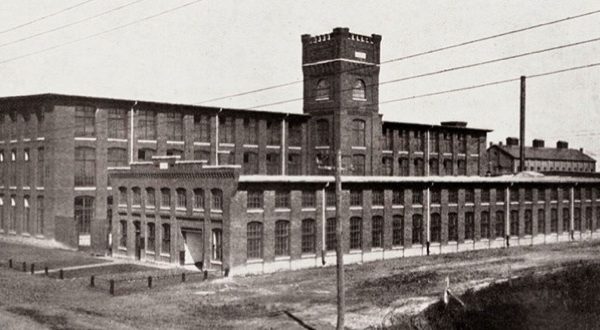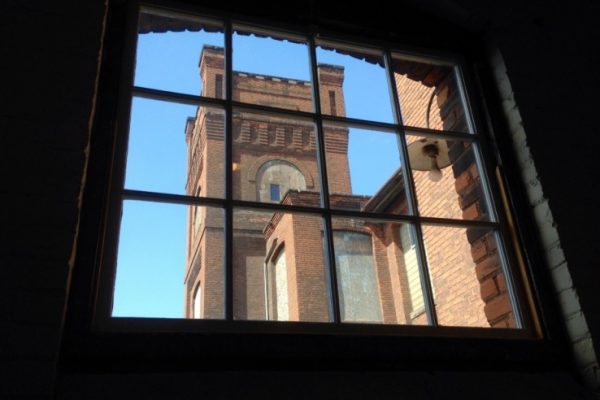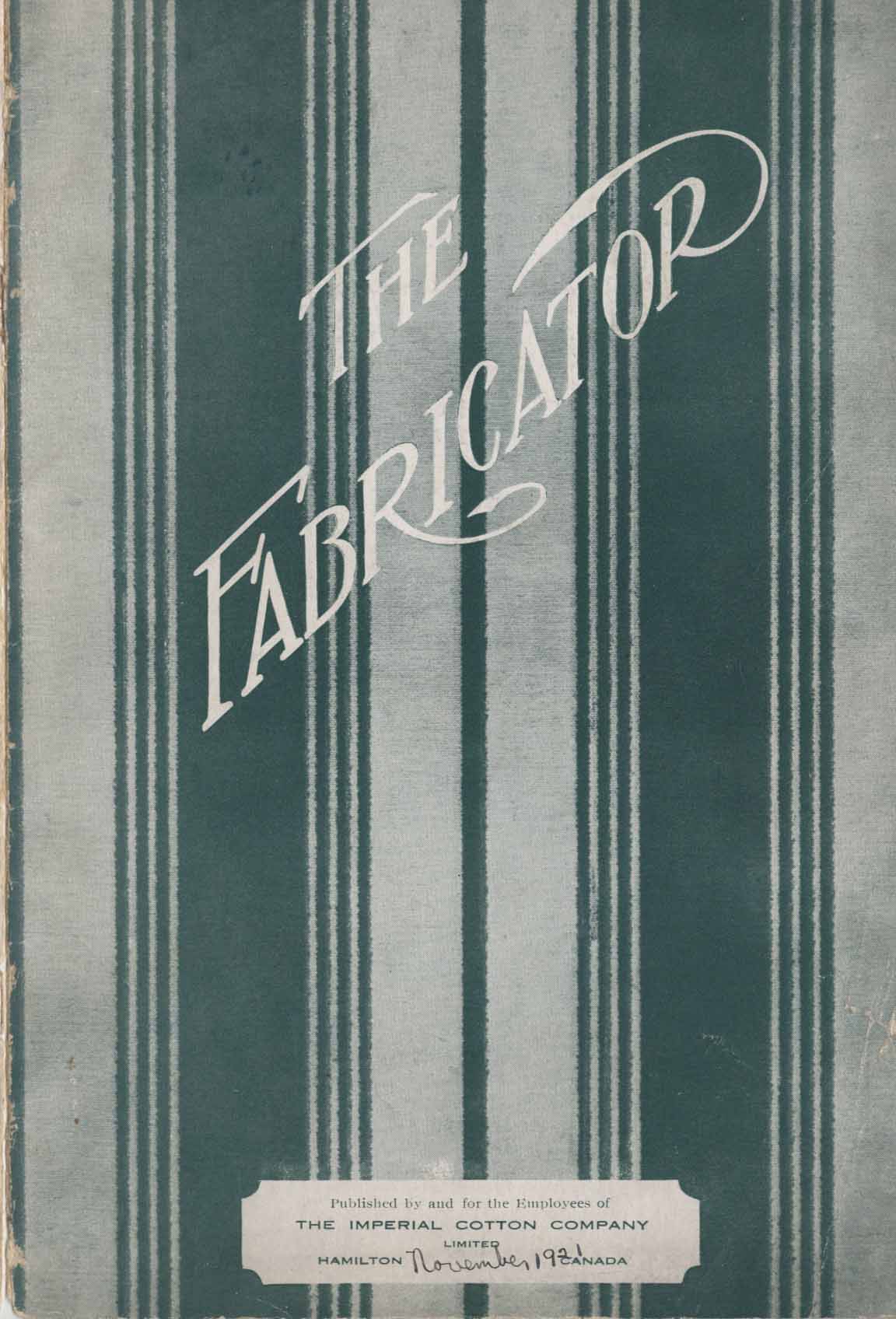History
During the late 19th to early 20th century, Hamilton’s textile production was one of the city’s largest industries, second only to the steel mills. The “5 Johns” of Hamilton (Gibson, Moodie, Sutherland, Dickenson and Patterson) were the ones responsible for this “Industrial Age” here. They opened the Cataract Power Company in 1896 which brought cheap electricity to the city, and they were Hamilton’s major land-owners in the region, both of which brought manufactures and entrepreneurs from all over North America.
A bookkeeper from a Yarmouth, Nova Scotia cotton duck mill came to Hamilton in 1887 to open up a rival company here. He approached John Patterson of the “5 Johns” to fund his cotton mill venture. Patterson already owned the land, and it was decided that his brother Edmond Patterson would be the architect. The Imperial Cotton Company was born in 1900 and a man named James M. Young, became the first President (and is a now distant relative of Robert Young, the current owner of the Hamilton Tiger Cats).
By 1906 orders were taken from all over the world using telegraphic code, and Imperial Cotton created its own code-book to simplify orders. Classes of duck manufactured were: once and sail; harvester and hydraulic; hose, bootleg and tennis; and filter and press.
The Imperial Cotton Company treated their employees to a quarterly magazine, “The Fabricator”, from 1921 to 1925. The magazine brought news of such things as a group insurance plan, a new 165-seat cafeteria with hot meals and electric refrigeration, and the purchase of a new lunch-room piano by the Entertainment Committee, among other things. The newsletter also listed community news such as the marriages, births, deaths, and vacations of mill employees.
In 1924 Imperial Cotton merged with Cosmos Cotton Mills (formerly Yarmouth Duck and Cotton). The new company, Cosmos-Imperial Mills Limited, owned and operated the complex until 1972, when most of its machinery and workers were sent back to Nova Scotia. A textile museum in Yarmouth houses many of the “Big Looms” that may have been used at The Cotton Factory.





